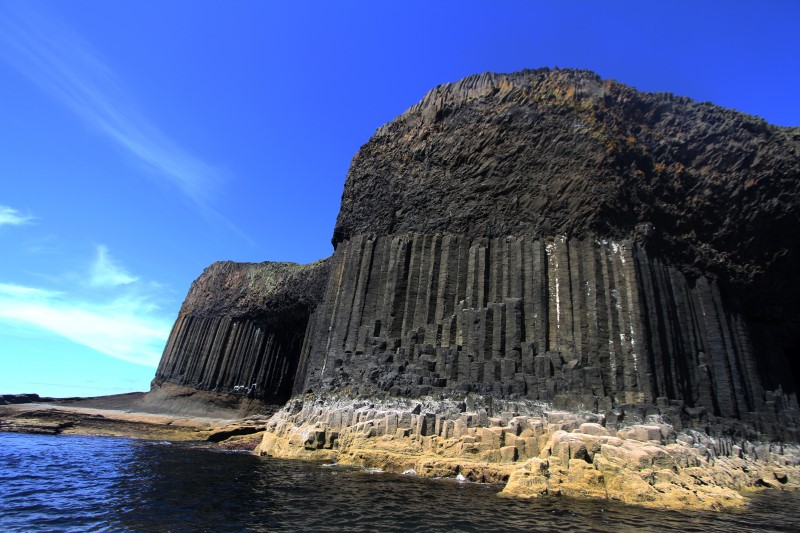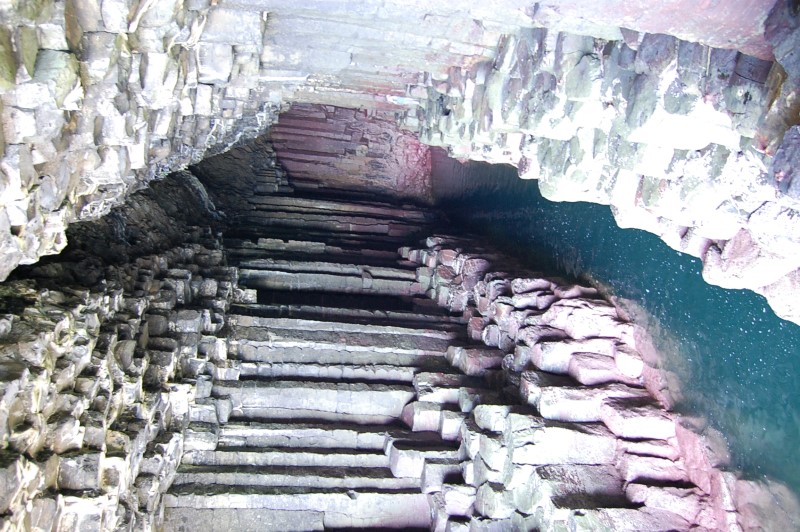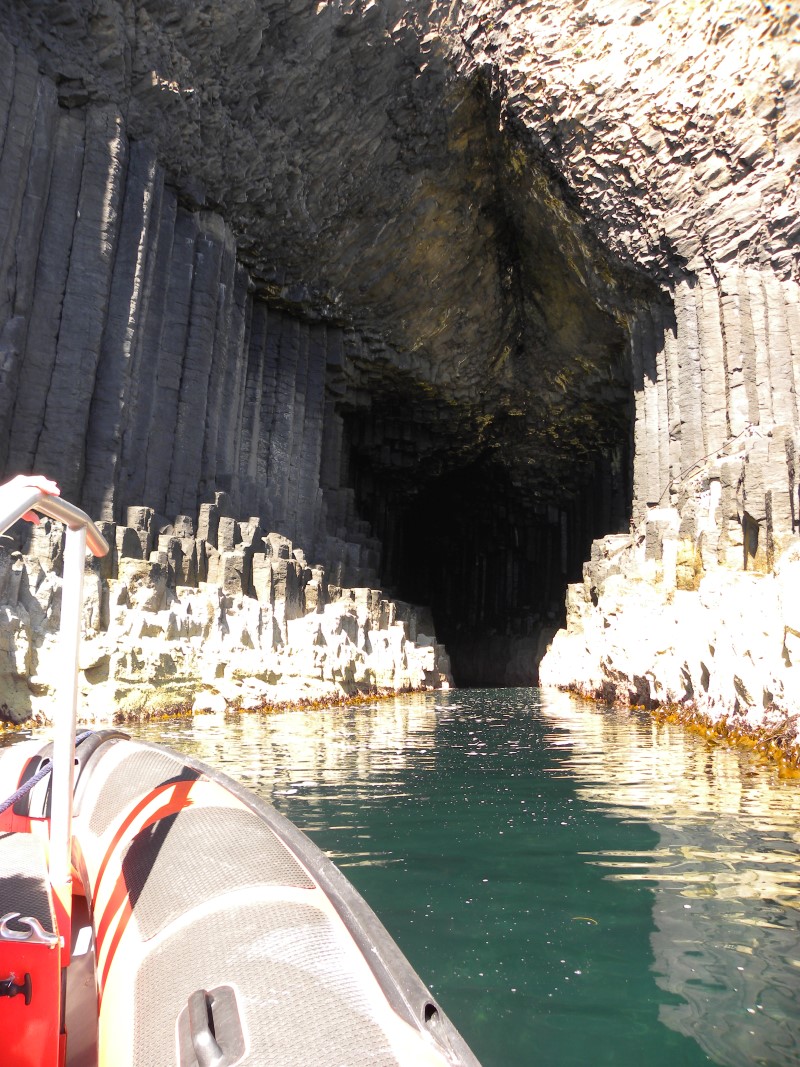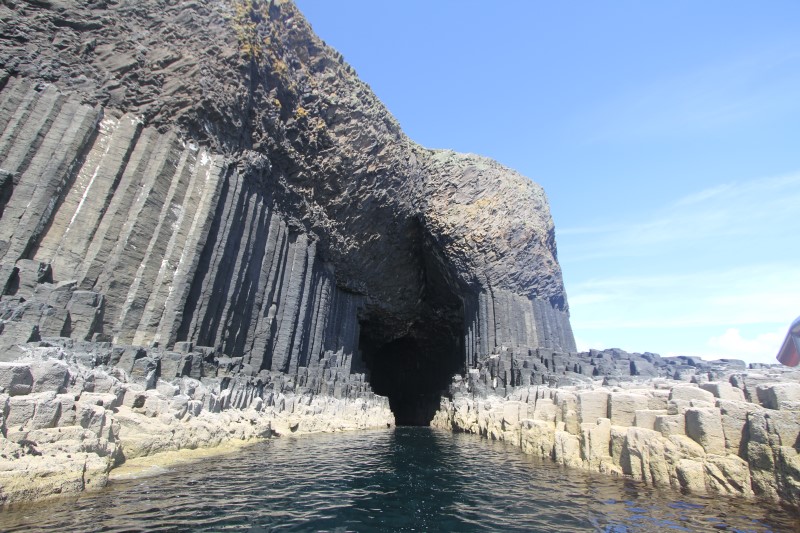Our Day Trips to Iona and Staffa have something for everyone; there’s the rich history of Iona’s Celtic past, impressive wildlife and the gorgeous geology of Fingal’s Cave.
Fingal’s Cave is a striking sea cave on the island of Staffa, also famous for its puffin colony in the summer months.Fingal’s Cave is made up of hexagonal columns which formed 60 million years ago when the Isle of Mull was a hub of volcanic activity – hard to imagine isn’t it?!

On the Southern end of Staffa you can find Fingal’s Cave in all its glory
Ben More, the highest point on Mull, is a reminder of Mull’s volcanic past as the extinct volcano looms over the island. When Ben More last erupted 60 million years ago, lava flowed all across the surrounding land, even stretching as far as Northern Ireland to form the Giant’s Causeway.
The impressive, angular columns of Fingal’s Cave are known as basalt columns, formed by cooling lava which cracked to release huge amounts of pressure and steam. Much to our delight, these cracks form hexagonal columns and patterns, which now make up Fingal’s cave.

Fingal’s Cave stretches 25 meters back and stands 70 metres high above the Hebridean sea.
The cave plays a huge part in Celtic folklore, not just here in Scotland but in Northern Ireland too, as legend says that Fingal’s Cave and the Giant’s Causeway were once connected! The story goes that Benandonner, our resident giant on the Scottish west coast, quarrelled with the Irish giant Fionn. Benandonner travelled to fight Fionn, who saw him coming and disguised himself as a baby asleep in a cradle. When our Scottish giant saw the huge baby asleep, he fled, imagining its father to be a giant among giants.
On a calm day our Seafari boats can enter the 70 metre high cave for you to witness the striking pillars and hearing the melodious waves crashing inside, which inspired Mendelssohn to write his Hebridean Overture.

Our cabin RIB Celtic Voyager entering the cave

